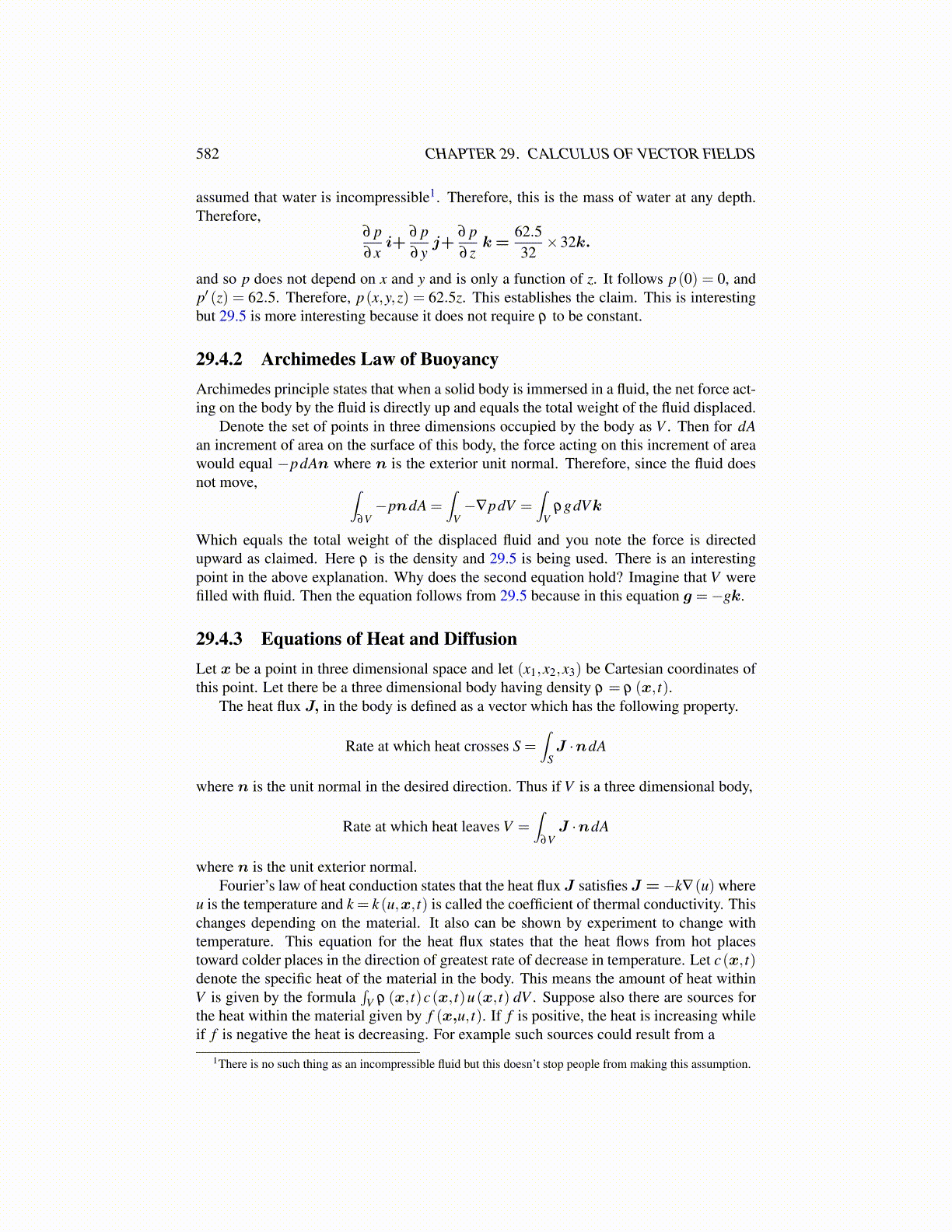
582 CHAPTER 29. CALCULUS OF VECTOR FIELDS
where v is the velocity. By Newton’s second law, the time rate of change of this linearmomentum should equal the total force acting on the chunk of material. In the followingderivation, dV (y) will indicate the integration is taking place with respect to the variabley. By Lemma 29.4.1 and the change of variables formula for multiple integrals
ddt
(∫Vt
ρ (t,y)v (t,y) dV (y)
)=
ddt
(∫V0
ρ (t,y (t,x))v (t,y (t,x))det(F) dV (x)
)
=ddt
(∫V0
ρ0 (x)v (t,y (t,x)) dV (x)
)=∫
V0
ρ0 (x)
[∂v
∂ t+
∂v
∂yi
∂yi
∂ t
]dV (x)
=∫
V0
ρ0 (x)1
det(F)
[∂v
∂ t+
∂v
∂yi
∂yi
∂ t
]det(F) dV (x)
=∫
V0
=ρ0(x)︷ ︸︸ ︷ρ (t,y (t,x))det(F)
1det(F)
[∂v
∂ t+
∂v
∂yi
∂yi
∂ t
]det(F) dV (y)
=∫
V0
ρ (t,y (t,x))[
∂v
∂ t+
∂v
∂yi
∂yi
∂ t
]det(F) dV (y)
=∫
Vt
ρ (t,y)[
∂v
∂ t+
∂v
∂yi
∂yi
∂ t
]dV (y) =
∫Vt
ρ (t,y) v̇dV (y)
where the dot on v indicates it is the total derivative. Having taken the derivative of thetotal momentum, it is time to consider the total force acting on the chunk of material.
The force comes from two sources, a body force b and a force which acts on the bound-ary of the chunk of material called a traction force. Typically, the body force is somethinglike gravity in which case, b=−gρk, assuming the Cartesian coordinate system has beenchosen in the usual manner. The traction force is of the form∫
∂Vt
s(t,y,n) dA
where n is the unit exterior normal. Thus the traction force depends on position, time, andthe orientation of the boundary of Vt . Cauchy showed the existence of a linear transfor-mation T (t,y) such that T (t,y)n = s(t,y,n). It follows there is a matrix Ti j (t,y) suchthat the ith component of s is given by si (t,y,n) = Ti j (t,y)n j. Cauchy also showed thismatrix is symmetric, Ti j = Tji. It is called the Cauchy stress. Using Newton’s second law toequate the time derivative of the total linear momentum with the applied forces and usingthe usual repeated index summation convention,∫
Vt
ρ (t,y) v̇dV (y) =∫
Vt
b(t,y) dV (y)+∫
∂Bt
eiTi j (t,y)n j dA,
the sum taken over repeated indices. Here is where the divergence theorem is used. Inthe last integral, the multiplication by n j is exchanged for the jth partial derivative and anintegral over Vt . Thus∫
Vt
ρ (t,y) v̇dV (y) =∫
Vt
b(t,y) dV (y)+∫
Vt
ei∂ (Ti j (t,y))∂y j
dV (y) ,